
|
[Outline of the accident]
Car A (passenger car) was traveling on a straight road 6.4 m wide, with two lanes in each direction, at about 10:00 p.m. in cloudy weather. The driver attempted to turn right at an intersection which have no traffic lights. Car B (passenger car) was coming from the opposite direction, traveling straight forward. Car A turned right without fully confirming the safety status, and collided with Car B in the front.
Worthy of notice in this accident is Car B. The driver of Car B (male in his 40s) was wearing a seat belt, and his air bag deployed upon the crash. Of the two passengers, a female in her 40s seated in the front, and another female in her 20s seated in the rear, the front-seat passenger was wearing a seat belt and the air bag on her side also deployed upon collision. The rear seat passenger, however, was not belted.
The speed at the time of crash was estimated to have been about 15 km/h for Car A and about 55 km/h for Car B.
|
[Damage to the car]
- Car A
Extensively damaged (maximum 27-cm deformation on the left side)
Equivalent barrier speed: approximately 20 km/h
- Car B
Extensively damaged (maximum 37-cm deformation in the front)
Car interior inward deformation: None
Equivalent barrier speed *: approximately 30 km/h
[Impact of collision; injury to occupants]
- Car B driver
He suffered bruises to the chest and left forearm caused by the seat belt and the deployed air bag, but the injuries were slight.
- Car B front-seat passenger
Although wearing a seat belt and deployment of the air bag prevented her from colliding against parts of the car's interior, the pressure of the seat belt against her abdomen caused traumatic perforation of the digestive tract (serious injury).
- Car B rear-seat passenger
Not having worn a seat belt, she jerked forward against the back of the front passenger seat as the car collided with Car A, deforming the seat back. She suffered bruises to both lower legs and other minor injuries.
|
|
|
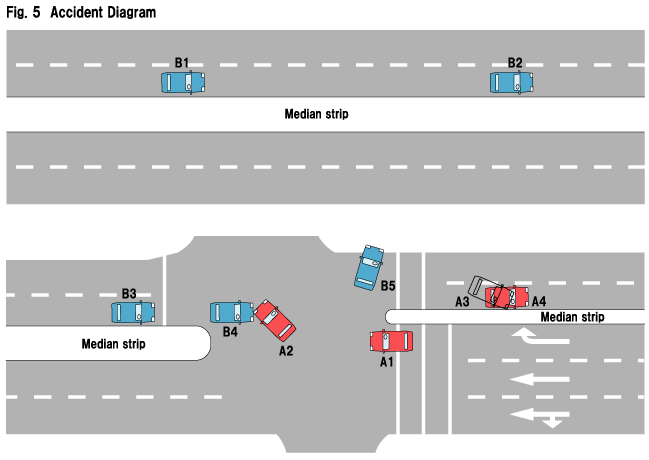
|
|
|
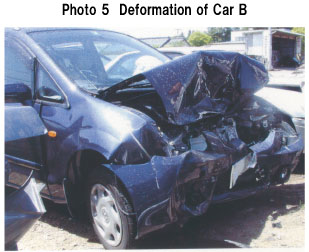
|
|
|
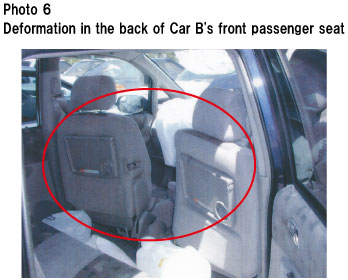
|
|
|
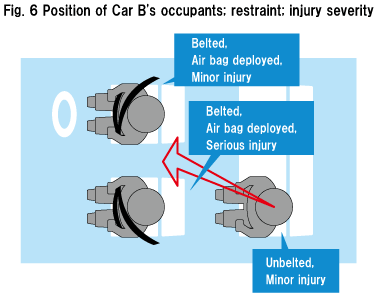
|
|
|
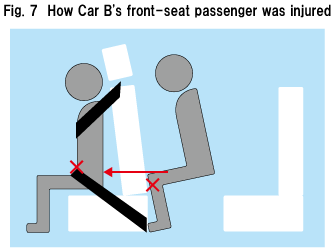
|
|
[Comment]
As the rear-seat passenger was not wearing a seat belt, she jerked forward and hit the back of the front passenger seat upon the impact of the collision with Car A.
Although the rear-seat passenger was afflicted with only a minor injury, the front-seat passenger suffered serious abdominal injury caused by the seat belt she was wearing, due to the force that pushed her forward upon impact, plus the force from the seat back.
The front-seat passenger, despite having worn a seat belt, thus suffered serious injury due to the failure of the rear-seat passenger to buckle up. If the rear-seat passenger had worn a seat belt, she would not have hit the back of the front-passenger seat, inflicting such a serious injury on the front-seat passenger.
|
|
UP
Back Next
|
